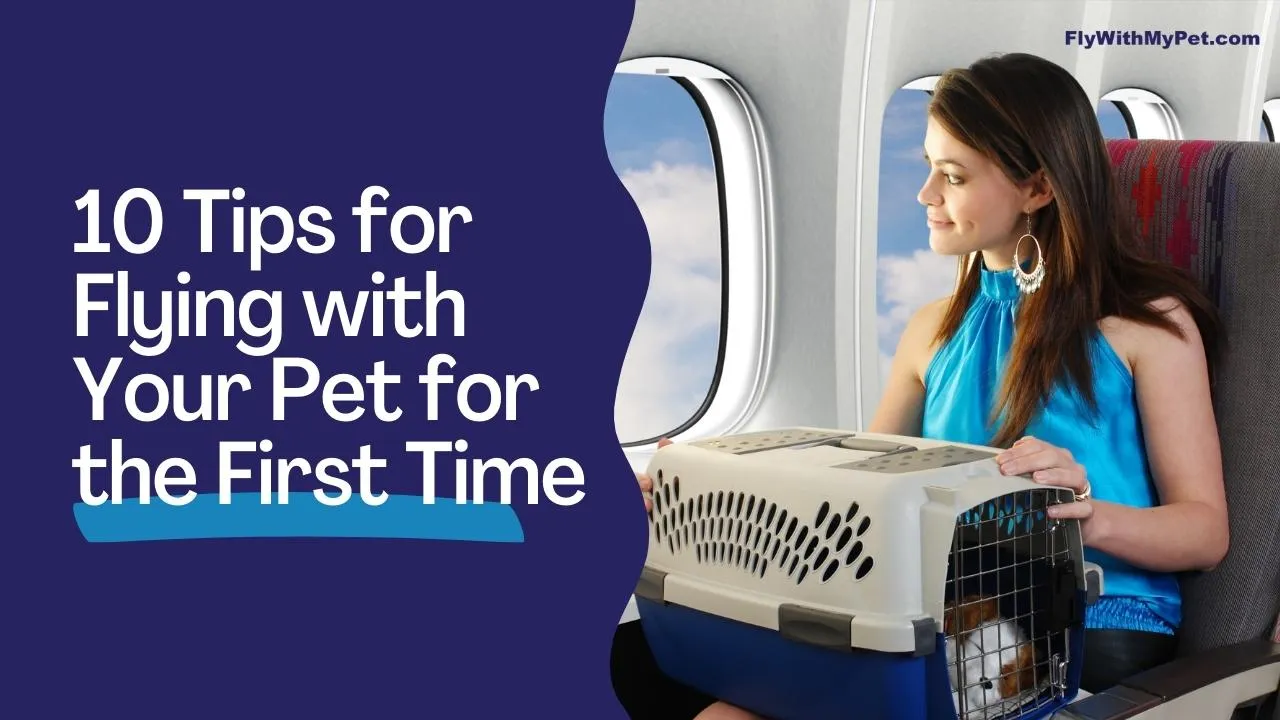
Figuring out everything you need to do before flying with your pet for the first time can be a daunting task! We’ve all got to start somewhere and considering it’s estimated that 2 million domestic animals travel on commercial flights every year, many people have been in your shoes!
Ensuring your pet’s safety and well being during traveling begins with you. We’ve compiled this list of helpful tips and hopefully by taking these steps into consideration before traveling, it might help ease any anxiety you’re feeling.
Research Pet Travel Restrictions Before Your Flight
Many airlines have breed restrictions, for example Brachycephalic or “short-nosed” breeds. Pugs, Boston Terriers, and Boxers all fit into this category. Ensure you talk with the airline before traveling.
Make sure you’re familiar with your airline’s pet policy. It’s not unusual for airlines to require a health certificate issued within 10 days of your flight. In addition to timeline regulations, be sure you understand your destination state or country’s rules. Some states and countries have restrictions on certain breeds.
Make An Appointment With Your Veterinarian
It’s important to know if your pet is healthy enough to travel. Your veterinarian will perform a health inspection and ensure your pet’s vaccinations are up-to-date. Depending on the time frame, you may need to book another appointment in order to obtain the documents needed to travel.
Domestic travel, regardless of mode of transportation, is governed by state regulations. Many states require a Certificate of Veterinary Inspection (CVI) from a licensed and accredited veterinarian for interstate travel. Rabies vaccinations are required by most states for travel. International travel will have more requirements, as these are set by the destination country. Beyond local and federal government requirements, airlines may also have immunization requirements for travel. Your veterinarian can help ensure you obtain the appropriate vaccinations and documentation needed for your travels.
Booking Your Flights
Airlines allow a limited number of pets per flight, so book early to ensure you get your desired flight. Especially when you fly with your pet in cargo or internationally. Make your reservations well in advance. Depending on the destination, the requirements can take months to prepare.
Try to book a non-stop, direct flight whenever possible. It’s also recommended to try to fly on a weekday when airports are typically less hectic.
If your pet will be traveling in the cargo hold, it’s best to fly in the morning or evening during the summer, and midday during the winter to avoid extremely hot or cold temperatures.
Acclimate Your Pet To Their Kennel
To make sure the flight isn’t a traumatic experience for your cat or dog, purchase your kennel well in advance and start getting your pet used to being in the space.
Try feeding them in their kennel for a couple weeks leading up to your flight, this will help build positive associations with being in the kennel. You can even add their bed and toys, to make the space that much more comfortable
Keep Pet Documents & IDs Handy
Write your dog’s name on its carrier and include identification tags with your home address and phone number. This can help if your dog is lost or if a handler has questions.
Carry a current photograph of your pet as well. If he’s lost during the trip, a photograph will make it much easier for airline employees or the local authorities to search effectively.
You might also want to consider a permanent form of id (such as a microchip) that will increase the likelihood of reuniting with your dog if he gets lost on the trip.
Keep in mind, each airline sets their own requirements for pets flying in the cabin and in cargo. Determine which documents your airline requires and keep them handy, so when you’re asked by various staff members, you can easily provide them.
Arrive & Check-In Early
Arrive at the airport early. Most airlines recommend arriving two hours before your flight when traveling with a pet. Keep a leash and a comfortable harness handy.
Arriving early will give you one last opportunity to exercise your dog before checking in. Passengers with pets must check in at the counter and leave time to account for long security lines.
Skip The Sedatives
According to the American Veterinary Medical Association, dogs should not be given sedatives or tranquilizers prior to flying because they can create respiratory and cardiovascular problems as the dog is exposed to increased altitude pressures.
Sedatives can also alter the animal’s natural ability to balance and maintain equilibrium, which can be dangerous when the carrier is moved.
Instead, try getting as much energy out as possible before the flight. Walks, play-time, and mental stimulation can all help!
Visit Pet Relief Areas
Many airports offer pet-relief areas. Try to give your pet a few opportunities to visit these stations before your flight. Remember to bring some doggie bags, just in case.
Bring A Chew Toy
Similar to humans, your pet’s ears will need to adjust to the altitude changes. To help alleviate pressure build-up, try giving them their favorite chew toy to gnaw on during the flight.
You Made It – Now What?
You made it! Try finding an area for your pet to go to the bathroom. When you can, go for a long walk before settling in where you’ll be staying. Your dog will feel more comfortable as soon as they get to see (and smell) the new surroundings.
And remember, give your pet lots of love and let them know they did a great job!
